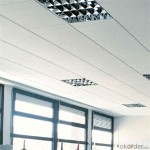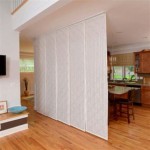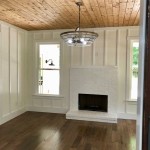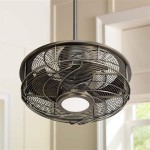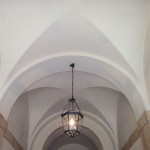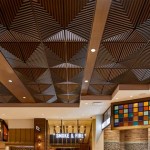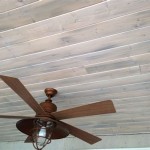What Is A Popcorn Ceiling?
A popcorn ceiling, also known as an acoustic ceiling, stipple ceiling, or cottage cheese ceiling, is a type of ceiling texture that was widely popular in residential construction from the 1950s through the 1980s. It is characterized by its bumpy, uneven surface, resembling popcorn kernels. This texture was primarily used for its sound-dampening properties and to conceal imperfections in the ceiling’s surface. While once considered a desirable feature, popcorn ceilings have largely fallen out of favor due to aesthetic preferences and concerns about asbestos content in older installations.
The application process for a popcorn ceiling typically involves spraying a mixture of materials onto the existing ceiling surface. This mixture usually consists of drywall joint compound, vermiculite (a mineral used for insulation and texture), and water. The texture is created by the way the material is sprayed and the size of the particles used in the mixture. The resulting uneven surface scatters sound waves, contributing to the acoustic properties of the ceiling. Furthermore, the texture can effectively hide minor flaws such as uneven drywall seams, dents, or nail pops, reducing the need for extensive smoothing and finishing work during construction.
The initial popularity of popcorn ceilings stemmed from a combination of factors, including their cost-effectiveness, ease of application, and functional benefits. They offered a relatively inexpensive way to improve the acoustics of a room and conceal surface imperfections, making them an attractive option for builders and homeowners alike. The speed with which they could be applied also contributed to their prevalence in large-scale residential developments. Moreover, popcorn ceilings were marketed as a modern and stylish alternative to traditional smooth ceilings, aligning with the design trends of the mid-20th century.
Asbestos Concerns and Health Risks
One of the primary reasons for the decline in popularity of popcorn ceilings is the potential presence of asbestos, a known carcinogen. Asbestos was commonly used in building materials, including popcorn ceiling textures, prior to the late 1970s. The use of asbestos in popcorn ceilings was primarily to enhance the fire resistance and durability of the material. However, it was subsequently discovered that exposure to asbestos fibers can lead to serious health problems, including mesothelioma, lung cancer, and asbestosis.
The health risks associated with asbestos exposure arise when the material is disturbed, releasing microscopic fibers into the air. These fibers can then be inhaled, leading to long-term respiratory problems. Activities such as scraping, sanding, or drilling into a popcorn ceiling containing asbestos can release these fibers, posing a significant health hazard. Consequently, homeowners considering removing or repairing a popcorn ceiling installed before the late 1970s are strongly advised to have the material tested for asbestos before proceeding with any work.
If asbestos is detected, it is crucial to engage a qualified and licensed asbestos abatement professional to safely remove the ceiling. Asbestos abatement involves specialized techniques and equipment to minimize the release of fibers and protect the health of workers and occupants. Attempting to remove an asbestos-containing popcorn ceiling without proper training and precautions can be extremely dangerous and may violate local regulations.
Even popcorn ceilings installed after the ban on asbestos may still pose some health concerns, although to a lesser extent. The dust generated during removal can still irritate the respiratory system, and proper ventilation and respiratory protection are recommended during any removal or repair work. It is always prudent to take precautions to minimize dust exposure, regardless of the age of the popcorn ceiling.
Aesthetic Considerations and Modern Alternatives
Beyond health concerns, the aesthetic appeal of popcorn ceilings has also waned over time. What was once considered a stylish and modern feature is now often viewed as outdated and visually unappealing. Many homeowners find the bumpy texture to be distracting and prefer the clean, smooth look of modern ceilings. The texture can also collect dust and cobwebs, making it difficult to clean effectively. The uneven surface can also cast shadows, making the room appear darker and smaller.
The trend towards minimalist and contemporary design styles has further contributed to the decline in popularity of popcorn ceilings. Modern interiors typically favor clean lines, smooth surfaces, and neutral color palettes. The textured surface of a popcorn ceiling clashes with these design principles, creating a visual disconnect. Consequently, many homeowners choose to remove popcorn ceilings to update the appearance of their homes and create a more modern and cohesive aesthetic.
Fortunately, there are numerous alternatives to popcorn ceilings that offer both aesthetic appeal and functional benefits. Smooth drywall ceilings are a popular choice, providing a clean and versatile backdrop for any interior design style. Textured paint finishes can also be used to add subtle visual interest without the dated look of a popcorn ceiling. Another option is to install a drop ceiling, which can improve acoustics and conceal wiring or ductwork. Each of these alternatives offers a different aesthetic and functional advantage, catering to a variety of preferences and needs.
When considering alternatives, it is important to factor in cost, ease of installation, and the desired aesthetic. Smooth drywall ceilings typically require more extensive preparation and finishing work compared to popcorn ceilings, which can increase the overall cost. Textured paint finishes are a relatively inexpensive and easy way to add visual interest, but they may not provide the same level of sound dampening as a popcorn ceiling. Drop ceilings can be a good option for concealing imperfections and improving acoustics, but they may lower the ceiling height and alter the proportions of the room. Ultimately, the best alternative will depend on the specific needs and preferences of the homeowner.
Removal and Repair Procedures
The removal of a popcorn ceiling can be a challenging and messy process, particularly if the ceiling contains asbestos. As discussed previously, asbestos testing is essential before commencing any removal work. If asbestos is present, professional abatement is required. If the ceiling does not contain asbestos, homeowners can attempt to remove it themselves, but it is crucial to take proper precautions to minimize dust exposure and protect the surrounding areas.
The typical procedure for removing a non-asbestos popcorn ceiling involves spraying the ceiling with water to soften the texture, then carefully scraping it off with a wide putty knife or scraper. A garden sprayer or pump sprayer can be used to apply the water evenly. It is important to avoid over-saturating the ceiling, as this can damage the underlying drywall. Scraping should be done gently to avoid gouging or scratching the drywall surface. Drop cloths should be placed on the floor and furniture to protect them from falling debris.
After the popcorn texture has been removed, the ceiling will likely require some patching and sanding to smooth out any imperfections. Drywall joint compound can be used to fill any holes or scratches, and a sanding pole with fine-grit sandpaper can be used to smooth the surface. Multiple coats of joint compound may be needed to achieve a perfectly smooth finish. Once the patching and sanding are complete, the ceiling can be primed and painted to give it a fresh, new look.
Repairing minor damage to a popcorn ceiling can be a simpler process than complete removal. Small dents or cracks can often be repaired by applying a small amount of popcorn texture repair compound to the affected area. These compounds are available at most hardware stores and are designed to match the existing texture. It is important to apply the compound sparingly and blend it in with the surrounding texture to achieve a seamless repair. For larger areas of damage, it may be necessary to remove the damaged section and apply a new layer of popcorn texture.
Regardless of whether you are removing or repairing a popcorn ceiling, it is essential to wear appropriate safety gear, including a respirator mask, gloves, and eye protection. Dust generated during the process can be irritating to the respiratory system and eyes, so it is important to take precautions to minimize exposure. Proper ventilation is also important to help clear the air of dust and particles. By following these precautions, homeowners can safely and effectively remove or repair their popcorn ceilings.

The Benefits Of Getting Rid Your Popcorn Ceiling Multi Trade Building Services

How Can You Tell If Your Popcorn Ceiling Has Asbestos

What Does Asbestos Popcorn Ceiling Look Like Removal Pro

Are Textured And Popcorn Ceilings Outdated

Why Do Homes Have Popcorn Ceilings

Popcorn Ceilings All You Need To Know Bob Vila

How Can You Tell If There Is Asbestos In Popcorn Ceilings

What Does Asbestos Popcorn Ceiling Look Like Removal Pro

How To Remove Popcorn Ceilings And Other Ceiling Coatings Heritage Custom Painting

The Popcorn Ceiling Solutions You Need To Know Statewide Hawaii
Related Posts

